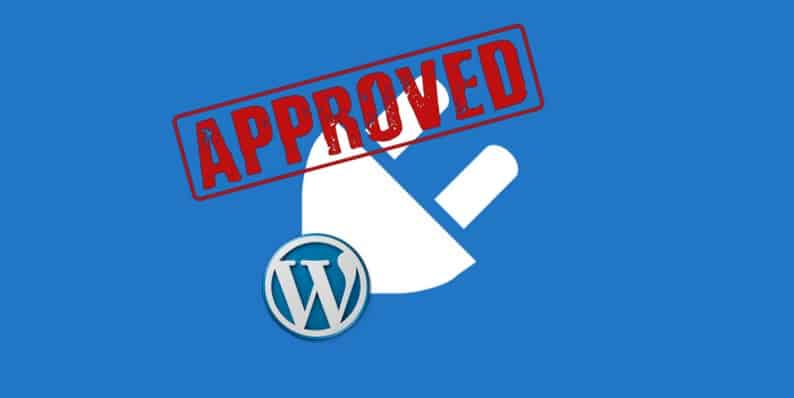We are all aware of the number of WordPress plugins that the official WordPress repository has to offer. In fact, more and more WordPress plugins are submitted each day to it by developers and agencies from around the world. There are a lot of functionalities that these plugins offer to several WordPress websites and blogs around the globe.
The idea of setting up a WordPress blog or a website is eased by the thought of the innumerable plugins that are available in the market. So, to come up with the idea of a totally unique plugin or a whole lot improved version of an existing plugin; is a tough call to make. Once you are through this and the end result is ready, the main quest of getting the plugin approved begins.
What one mustn’t forget is the fact that getting their plugins approved isn’t as hard as it might appear to be. We know that this process isn’t exactly a breezy one, but with the right steps in the right direction, one can get their WordPress plugin approved in the first go. Also, getting a substantial number of downloads later on with good ratings is another challenge.
Points That Are Officially a Must to Consider
- Make sure that the WordPress plugin you have created is compatible with the GNU General Public License v2, or any later version.
- Do not try to track or obtain sensitive user information, without the users’ consent.
- No more than 12 tags should be included in the plugin page of the directory.
- Moral obligations as per the WordPress code of conduct must be strictly followed.
- Follow the Developers’ guideline by all means. The extended version will help a newbie better.
To take things forward here is a detailed guide to help you get your plugins approved with the official WordPress repository.
Tip No. 1: Begin with a Plugin That Is Really Needed
This is the only thing that matters. If you are coming up with a plugin, make sure that it is unique or at least it offers some new functionalities. Let’s say if you want a make a pop-up plugin, chances that your plugin might get rejected because the WordPress repository is already full of many popular and efficient pop-up plugins.
Tip No. 2: Provide the Code and Do Not Complicate It
Believing that a complex code will project a better WordPress plugin might be a nice thing to do. Also, you might want to protect your code so that people can’t copy it. But, sources tell that plugin reviewers do not permit such code on WordPress.org. Make sure to put in a link to the code so it can be downloaded by the reviewers and checked.
Tip No. 3: Getting Your Functions and Class Declarations Prefixed
Do not go for non-unique function or class names. Avoid copying and pasting from a tutorial because that can catch reviewer’s attention easily. Also, never use the prefix of my_. Using short and abbreviated prefixes is highly recommended.
Tip No. 4: Give Out a Good ReadMe.Txt File
The ReadMe file is the representational soul of your submitted plugin. Properly quoting the plugin name with the WordPress author IDs of contributors coupled up with the GPL License, tags, donate link, the required WordPress version, and a brief description is the to-do list here. Use relevant tags by picking up them from other similar popular plugins. Also, add maximum screenshots with the installation guide and the support forum i.e. the Frequently asked questions page. Finally, when you are done; run the ReadMe Validator to find any errors or missing information.
Tip No. 5: Refrain from Loading Your Own JQuery
Chances of your plugin getting rejected are high if you have chosen to load your own versions of jQuery, from any external CDN or any other script that is included in WordPress core.
Tip No. 6: Sending a Zip File of Your Plugin
A Zip file of your WordPress plugin is something that cannot be skipped. A properly complete zip file helps the reviewer go through the contents without having to put up things together.
Avoid ‘Calling Home’
You might have your reasons for calling home but this is something you must avoid at all costs. For the ones, not aware of this term, when developers send data back to their servers from the site a plugin is installed, it is termed as “Calling home”. Legitimate reasons for doing so include obtaining a better understanding of the types of sites that will be using the plugins or just create a list of the user sites.
Doing so without seeking the user’s permission can get your plugin into trouble. And this is something that is considered unacceptable by the user, firsthand and so your plugin that you wish to get approved must ‘disable call home’ by default.
Others:
- Test the plugin with WP_DEBUG on
- Do not use custom versions of packaged JavaScript libraries
- Submit self-contained plugins
A cleanly coded plugin might get approved within seven days and a plugin with code issues may take a longer time. But, it solely depends on the amount of time taken to rectify the code issues and errors.
So, when you are in a state of expecting an email from the plugin approval squad guys. It’s highly recommended that you add the addresses to your email whitelist. Once the email for rectification is sent across, the people at the other end give you seven days to revert. If the developer fails to do so, the plugin gets rejected. And this leads to starting from the scratch, all over again.
If your plugin still gets rejected, that is probably due to some security conflict or the failure to follow the guidelines. Make sure that you put up all the above-mentioned things in place. Also, follow the code of guidelines so that the approval procedure is aided and your WordPress plugin gets approved right in time.
